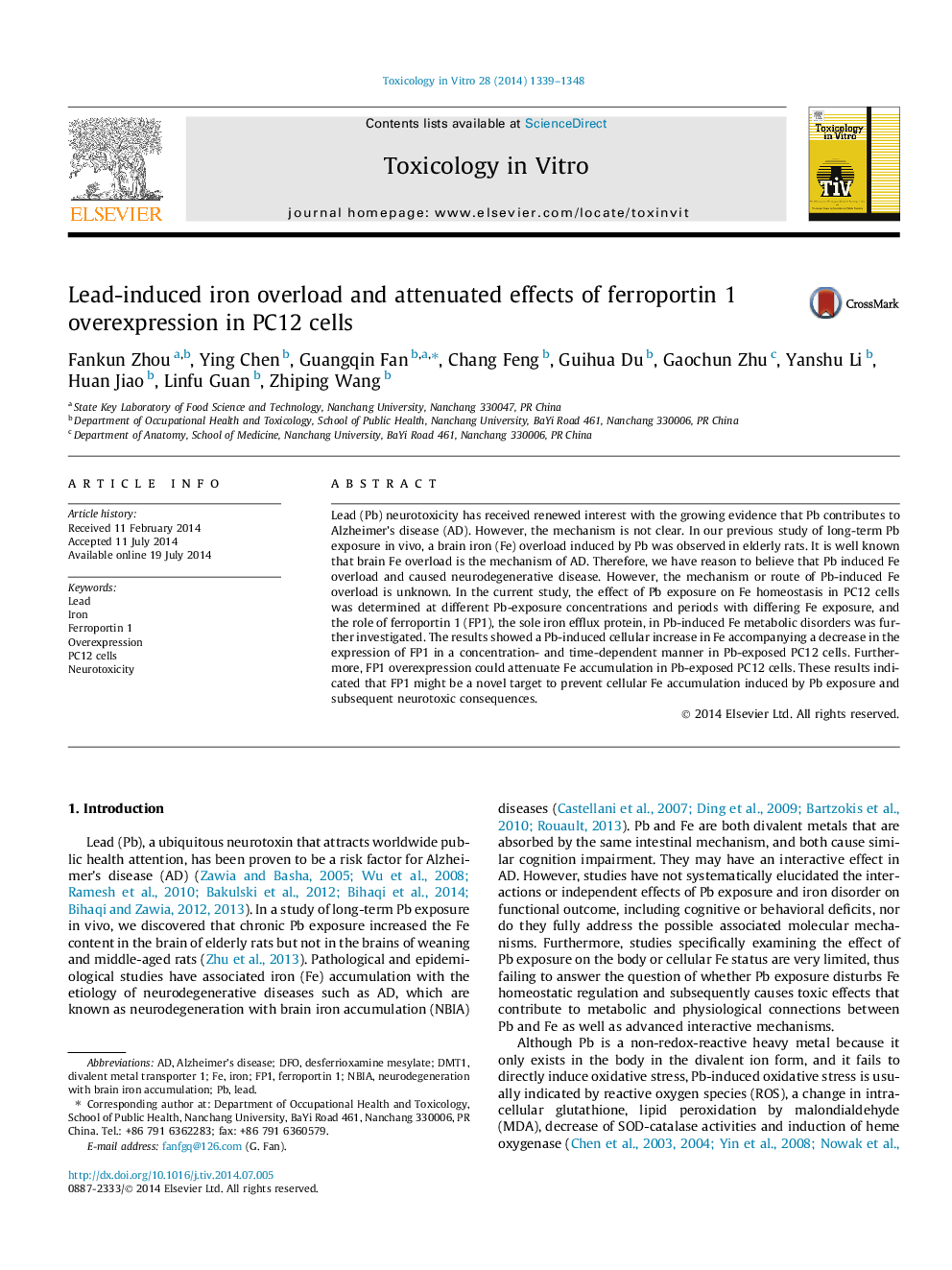| Article ID | Journal | Published Year | Pages | File Type |
|---|---|---|---|---|
| 5861824 | Toxicology in Vitro | 2014 | 10 Pages |
Abstract
Lead (Pb) neurotoxicity has received renewed interest with the growing evidence that Pb contributes to Alzheimer's disease (AD). However, the mechanism is not clear. In our previous study of long-term Pb exposure in vivo, a brain iron (Fe) overload induced by Pb was observed in elderly rats. It is well known that brain Fe overload is the mechanism of AD. Therefore, we have reason to believe that Pb induced Fe overload and caused neurodegenerative disease. However, the mechanism or route of Pb-induced Fe overload is unknown. In the current study, the effect of Pb exposure on Fe homeostasis in PC12 cells was determined at different Pb-exposure concentrations and periods with differing Fe exposure, and the role of ferroportin 1 (FP1), the sole iron efflux protein, in Pb-induced Fe metabolic disorders was further investigated. The results showed a Pb-induced cellular increase in Fe accompanying a decrease in the expression of FP1 in a concentration- and time-dependent manner in Pb-exposed PC12 cells. Furthermore, FP1 overexpression could attenuate Fe accumulation in Pb-exposed PC12 cells. These results indicated that FP1 might be a novel target to prevent cellular Fe accumulation induced by Pb exposure and subsequent neurotoxic consequences.
Keywords
Related Topics
Life Sciences
Environmental Science
Health, Toxicology and Mutagenesis
Authors
Fankun Zhou, Ying Chen, Guangqin Fan, Chang Feng, Guihua Du, Gaochun Zhu, Yanshu Li, Huan Jiao, Linfu Guan, Zhiping Wang,
